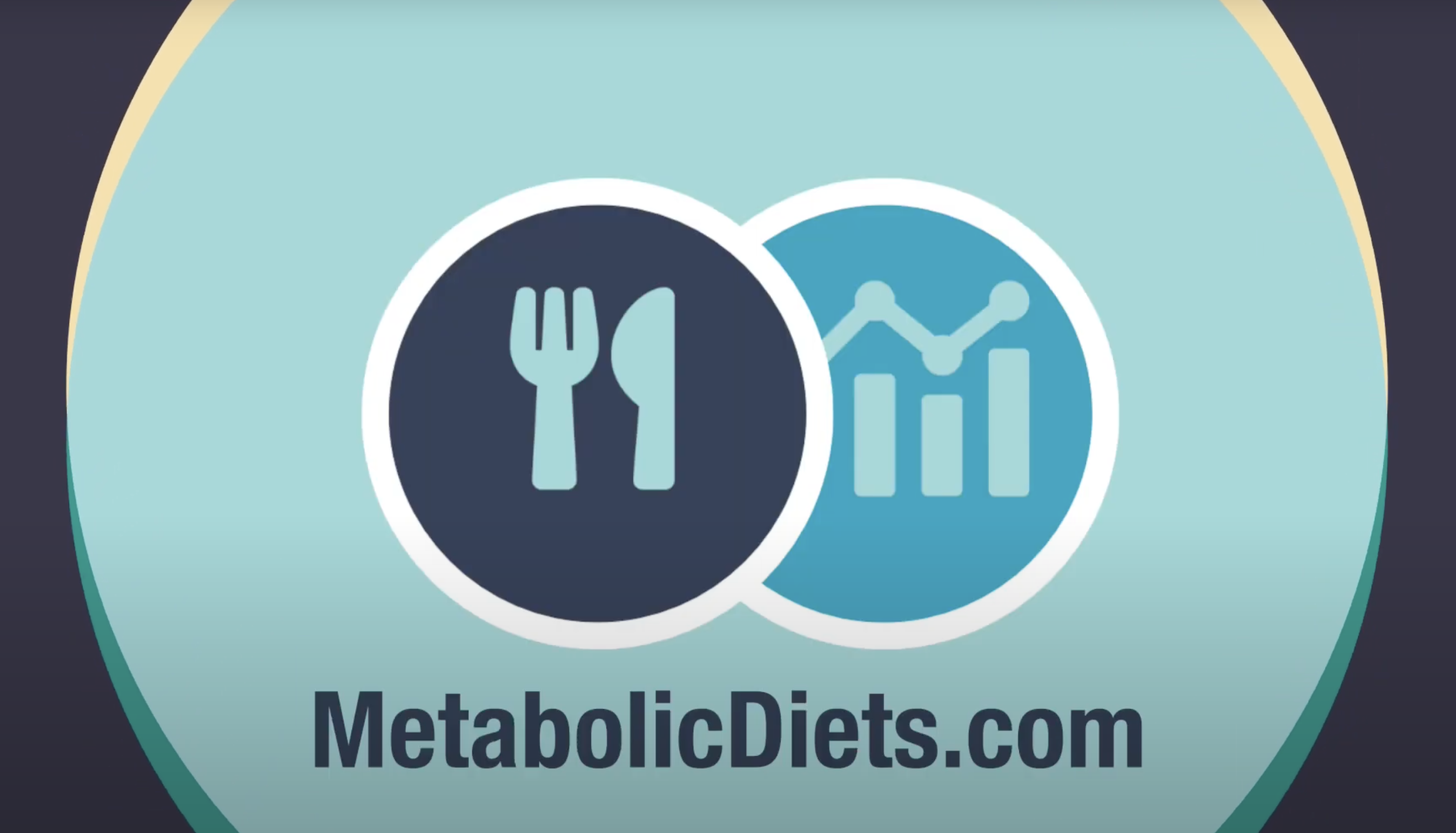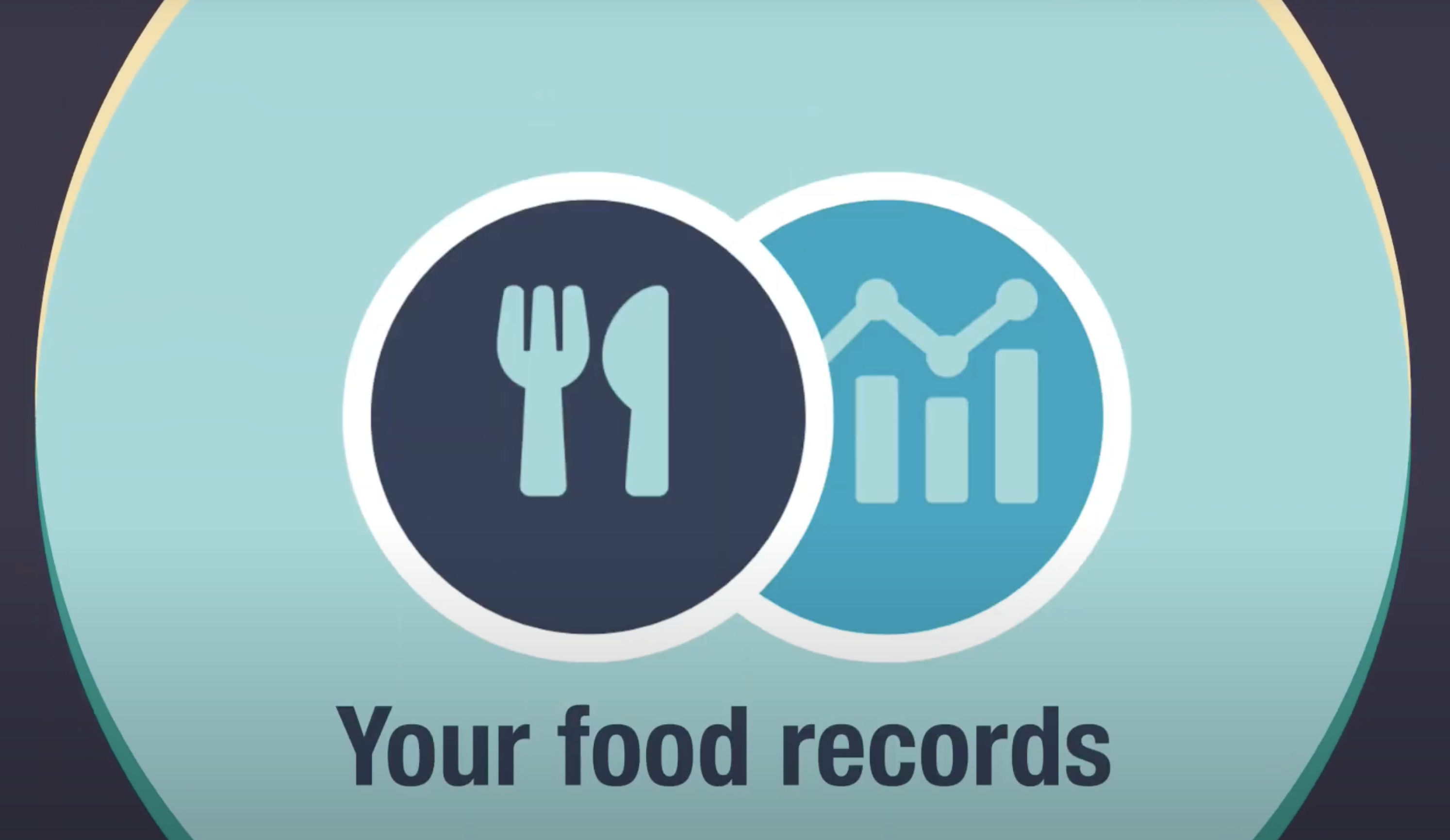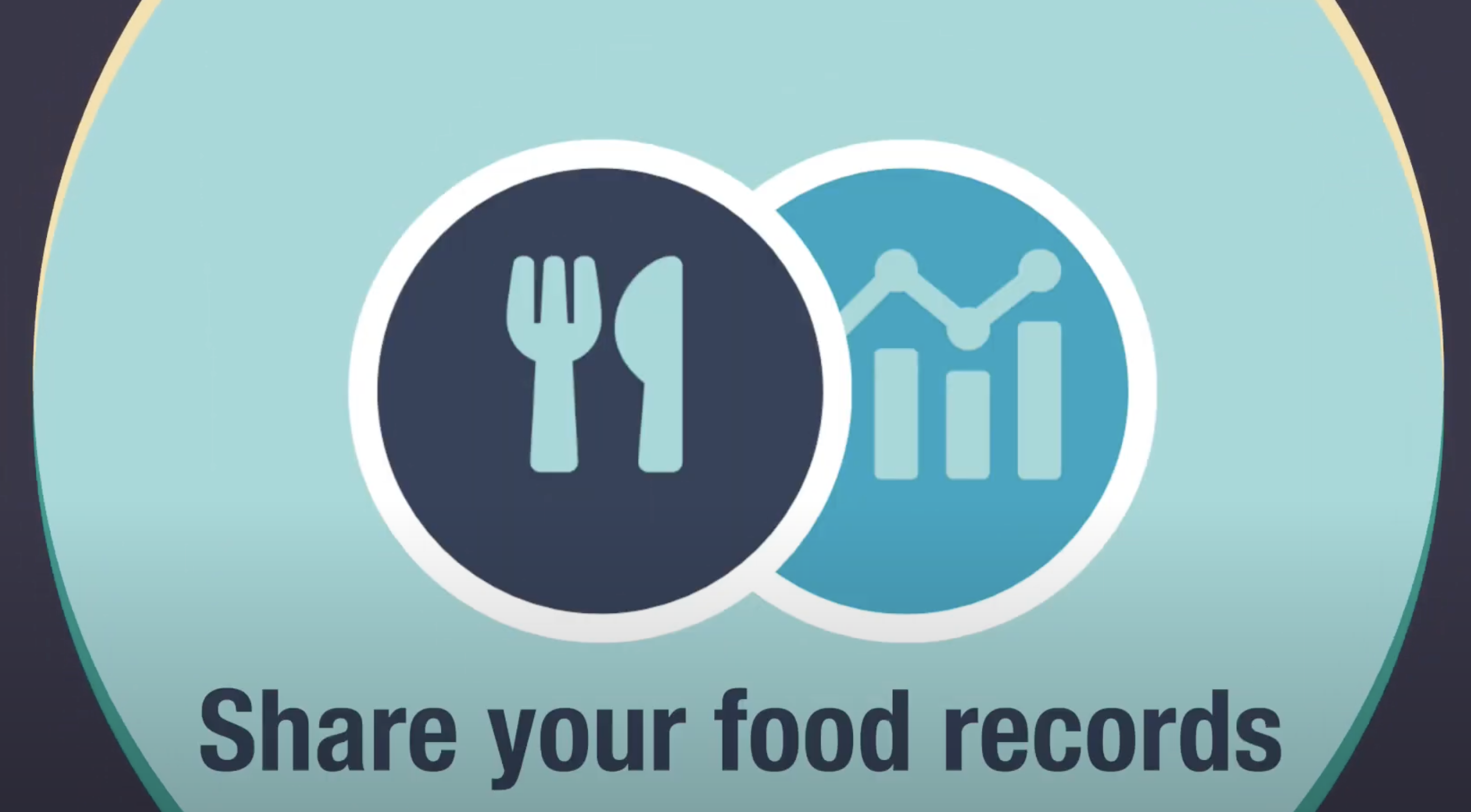A tracking app designed to support families and children dealing with a rare disease and that are on a restricted diet.
Free to use, web based and supported by dieticians
- Support for 16 different rare diseases
- Data provided by GMDI database
- Daily nutrient tracker
- Add your own food or recipe
- Add weight / height & blood tracking new feature
- Export & share your diet records new feature
- 'Excel-like' food record edits new feature
- Manage multiple members with one account new feature
This app is meant for families and children with a rare disease on a restricted diet. It supports the following diseases:
- Phenylketonuria (PKU)
- Maple Syrup Urine Disease (MSUD)
- Glutaric Acidemia type 1 (GA1)
- Pyridoxine dependent epilepsy (PDE)
- Methylmalonic Acidemia (MMA)
- Ornithine Transcarbamylase deficiency (OTC)
- Proprionic Acidemia (PROP)
- Homocystinuria (HCY)
- Isovaleric Acidemia (IVA)
- Argininemia (ARG)
- Argininosuccinic Aciduria (ASA)
- Carbamoyl phosphate synthetase (CPS1)
- Tyrosinemia type 1 (TYR1)
- Citrullinemia I (Cit-1)

What is PKU?
Phenylketonuria (PKU), is a genetic disorder caused by a deficiency in phenylalanine hydroxylase (PAH) enzyme resulting in high phenylalanine (Phe) concentrations in the blood and brain.
Phe is one of the important essential amino acids that we need to eat from protein in food. Protein is important for growth in children and health maintenance in adults.
PAH is an enzyme that helps break down Phe to tyrosine (Tyr).
Too much Phe in the blood may result in intellectual disability, behavioral disorders and seizures.
Why a diet?
Since the 1960’s a Phe-restricted and Tyr-supplemented diet has been the primary medical therapy for people living with PKU.
The goal is to lower blood Phe levels to treatment ranges and provide enough dietary Tyr.
People living with PKU are prescribed their daily Phe (protein) restriction by their doctor or dietitian. These daily goals often need to be changed based on each person’s nutritional needs and age requirements.
Since nutrition labels on foods do not list Phe content of foods, it is very difficult for families to track daily dietary Phe intake.
We hope this App makes daily Phe counting and meal planning easier for people following low Phe diets.
For whom?
This App is designed to support families and children with PKU on phenylalanine restricted diets.
This App is not a substitute for the health care provided by your medical team!

What is MSUD?
Maple Syrup Urine Disease (MSUD) is a genetic disorder caused by a deficiency in alpha-ketoacid dehydrogenase, an enzyme needed to break down branch chain amino acids.
These amino acids include: Leucine (Leu), Isoleucine (Ile), Allo-isoleucine, and Valine (Val)
Leu, Ile, allo-isoleucine and Val are important amino acids that make up protein in foods. Protein is important for growth in children and health maintenance in adults.
The name of the disease came about as high levels of these amino acids in the urine produce a smell similar to that of maple syrup.
Decreased alpha-ketoacid dehydrogenase enzyme activity results in toxic levels of Leu, Ile, allo-isoleucine and Val, as well as their associated metabolites.
If left untreated, patients are left with dangerously high levels of Leu, Ile, and Val, which causes degeneration of brain cells and seizures.
Patients with MSUD appear normal at birth, however within 3 or 4 days, symptoms may start to appear. Symptoms can include: loss of appetite, mildly irritable and dehydrated.
Why a diet?
Patients are prescribed a protein restricted diet to prevent elevated levels of Leu, Ile and Val, and thus preventing brain damage.
People living with MSUD are prescribed their daily protein restriction by their physician or dietitian. Patients also frequently restrict their Leu, Ile and Val intake. Each person’s daily goals change and need ongoing adjustment based on each person’s nutritional needs.
Since nutrition labels on foods do not list Leu, Ile and Val contents of foods, it is very difficult to track daily dietary these three amino acids intakes.
We hope this App makes daily protein and amino acid counting and meal planning easier for people following low protein diets.
For whom?
This App is designed to support families and children with MSUD on protein restricted diets.
This App is not a substitute for the health care provided by your medical team!

What is GA1?
Glutaric Acidemia type 1 (GA1), is a genetic disorder caused by a deficiency in glutaryl-CoA dehydrogenase (GCDH) enzyme needed to break down lysine (Lys) and tryptophan (Trp).
Lys and Trp are important amino acids that we need to eat from protein in foods. Protein is important for growth in children and health maintenance in adults.
GCDH is an enzyme that helps break down glutaric acid, 3-hydroxy (OH)-glutaric and glutaconic acids
Patients with GA-1 may or may not have any symptoms at birth and appear normal until illness occurs. This illness may present with symptoms such as vomiting, ataxia, seizures, brain bleeds, and macrocephaly.
An oral dose of riboflavin, a vitamin, is prescribed to help increase any remaining function of the GCDH enzyme.
Why a diet?
In addition to prescribed riboflavin, patients are prescribed a Lys and protein restricted diet to prevent high levels glutaric acid, 3-hydroxy (OH)-glutaric and glutaconic acid.
People living with GA-1 are prescribed their daily Lys and protein restriction by their doctor or dietitian. These daily goals often need to be changed based on each person’s nutritional needs and age requirements.
Since nutrition labels on foods do not list Lys content of foods, it is very difficult for families to track daily dietary Lys intake.
We hope this App makes daily Lys counting and meal planning easier for people following low Lys diets.
Why a diet?
This App is designed to support families and children with GA-1 on lysine restricted diets.
This App is not a substitute for the health care provided by your medical team!

What is PDE?
Pyridoxine dependent epilepsy (PDE) is a rare genetic disorder caused by Antiquitin (ATQ) deficiency.
ATQ helps our bodies break down lysine (Lys). Lys is one of the important amino acid that we need to eat from protein in food. Protein is important for growth in children and health maintenance in adults.
Problems with the breakdown of Lys can prevent vitamin B6 (Vit B6) from working normally in the body.
Without Vit B6, toxins build up in the brain, which can lead to seizures and developmental delays.
Patients with this disorder experience seizures that cannot be controlled by regular anti-epileptic drugs. Read more here.
Therefore, doctors prescribe Vit B6 to patients with PDE, as it often helps to control seizures.
However, Vit B6 does not prevent developmental delays in over 75% of patients with PDE.
Why a diet?
Because people with PDE have problems with Lys breakdown, a Lys (protein) restricted diet has been added to regular medical treatment for PDE.
The PDE Consortium published a study showing favorable effects in 2012 and subsequently developed recommendations for its safe use in PDE patients.
The goal of the diet is to reduce the build up of toxins.
People living with PDE are prescribed their daily Lys and protein restriction by their doctor or dietitian. These daily goals often need to be changed based on each person’s nutritional needs and age requirements.
Since nutrition labels on foods do not list the Lys content, it is very difficult for families to track daily dietary Lys intake.
This App makes daily Lys counting and meal planning easier for people following low Lys diets.
For whom?
This App is designed to support families and children with PDE, treated with the Lys-restricted diet as add on therapy to Vit B6.
This App is not a substitute for the health care provided by your medical team!

What is MMA?
Methylmalonic Acidemia (MMA) is a genetic disorder caused by a deficiency in the methylmalonyl-CoA mutase (MCM) enzyme.
With the help of Vitamin B12 (Vit B12) (also known as Cobalamin), MCM is responsible for the break down of the amino acids: isoleucine (Ile), valine (Val), methionine (Met) and threonine (Thr).
Ile, Val, Met and Thr are important amino acids that we need to eat from protein in foods. Protein is important for growth in children and health maintenance in adults.
Decreased MCM enzyme activity results in high levels of methylmalonyl CoA.
Depending on the severity of the disorder, symptoms may appear at birth or in early infancy. The MMA symptoms include (but are not limited to): decreased muscle tone, failure to thrive, anorexia, and an enlarged liver.
Long term symptoms of this disorder may include kidney disease, inflammation of the pancreas and feeding problems.
Why a diet?
Patients are prescribed a protein restricted diet to prevent elevated levels methylmalonyl CoA.
People living with MMA are prescribed their daily protein restriction by their doctor or dietitian. Patients also frequently restrict their Ile, Val, Met and Thr intake. These daily goals often need to be changed based on each person’s nutritional needs and age requirements.
Since nutrition labels on foods do not list Ile, Val, Met and Thr content of foods, it is very difficult for families to track their daily dietary intake.
We hope this App makes daily protein and amino acids counting and meal planning easier for people following low protein diets.
For whom?
This App is designed to support families and children with MMA on protein restricted diets.
This App is not a substitute for the health care provided by your medical team!

What is OTC?
Ornithine Transcarbamylase deficiency (OTC) is a genetic disorder caused by a deficiency in the Ornithine Transcarbamylase enzyme.
OTC is an X-linked disorder, as a result, it occurs more often in boys (one X chromosome) than in girls (two X chromosomes).
Ornithine Transcarbamylase is responsible for the break down of the molecules carbamoyl phosphate and ornithine (Orn) into citrulline (Cit) in the urea cycle. OTC is part of group of disorders called Urea Cycle Disorders (UCD).
Cit is an important amino acid that makes up protein in foods. Protein is important for growth in children and health maintenance in adults.
When the enzyme Ornithine Transcarbamylase is damaged or missing, people are not able to produce urea normally and nitrogen builds up in the blood in the form of ammonia.
Cit is supplemented for some people with OTC to allow for an alternate excretion route for ammonia.
Initial symptoms of OTC, which usually appear in the first few days of life, can include: lethargy, poor appetite, poor control of breathing rate or body temperature.
Why a diet?
To minimize the build up of ammonia in the blood, people with OTC are prescribed a low protein diet and Cit is carefully monitored.
People living with OTC are prescribed their daily protein restriction by their doctor or dietitian. These daily goals often need to be changed based on each person’s nutritional needs and age requirements.
Calculating and tracking protein intake can be a very hard and troublesome task for those with protein-restricted diets.
We hope this App makes daily protein counting and meal planning easier for people following low protein diets.
For whom?
This App is designed to support families and children with OTC on protein restricted diets.
This App is not a substitute for the health care provided by your medical team!

What is prop?
Proprionic Acidemia (PROP) is a genetic disorder caused by a deficiency in the propionyl-CoA carboxylase enzyme.
Propionyl-CoA carboxylase is responsible for the break down of the amino acids): isoleucine (Ile), valine (Val), methionine (Met) and threonine (Thr).
Ile, Val, Met and Thr are important amino acids that we need to eat from protein in foods. Protein is important for growth in children and health maintenance in adults.
Propionyl-CoA carboxylase is an enzyme that helps break down Propionyl-CoA.
The symptoms of PROP usually appear within the first few days of life. These symptoms may include worsening: poor appetite, vomiting, irritability, low muscle tone and lack of energy.
Long term symptoms of this disorder include pancreatitis, seizures and developmental delay.
Why a diet?
Patients are prescribed a protein-restricted diet to prevent high levels of propionyl-CoA.
People living with PROP are prescribed their daily protein restriction by their doctor or dietitian. Patients also frequently restrict their Ile, Val, Met and Thr intake. These daily goals often need to be changed based on each person’s nutritional needs and age requirements.
Since nutrition labels on foods do not list Ile, Val, Met and Thr content of foods, it is very difficult for families to track their daily dietary intake.
We hope this App makes daily protein and amino acid counting and meal planning easier for people following low protein diets.
For whom?
This App is designed to support families and children with PROP on protein restricted diets.
This App is not a substitute for the health care provided by your medical team!

What is HCY?
Homocystinuria (HCY) is a genetic disorder caused by a deficiency in the cystathionine beta-synthase enzyme.
The amino acid methionine (Met), commonly found in a normal diet, is converted to homocysteine. The enzyme cystathionine beta-synthase is then responsible for converting the homocysteine to cysteine (Cys).
Met is an important amino acid that makes up protein in foods. Protein is important for growth in children and health maintenance in adults.
Decreased cystathionine beta-synthase enzyme activity results in the build up of homocysteine and methylmalonic acid.
Symptoms of HCY may include: downward dislocation of the lens, increased risk of strokes and developmental delay.
Why a diet?
Patients are prescribed a protein restricted diet to prevent elevated levels of homocysteine and methlymalonic acid.
People living with HCY are prescribed their daily protein restriction by their physician or dietitian. In particular, patients restrict their Met intake. Each person’s daily goals change and need ongoing adjustment based on each person’s nutritional needs.
Since nutrition labels on foods do not list Met content of foods, it is very difficult to track their daily dietary intake.
We hope this App makes daily protein and tyrosine counting and meal planning easier for people following low protein diets.
For whom?
This App is designed to support families and children with HCY on protein restricted diets.
This App is not a substitute for the health care provided by your medical team!

Why IVA?
Isovaleric Acidemia (IVA) is a genetic disorder caused by a deficiency in the isovaleryl-CoA dehydrogenase (IVD) enzyme.
IVD is responsible for the break down of isovaleric acid that comes from an amino acid called leucine (Leu).
Leu is an important amino acid that we need to eat from protein in food. Protein is important for growth in children and health maintenance in adults.
Decreased IVD enzyme activity results in very high levels of isovaleric acid.
Symptoms of IVA, which usually appear within the first few days of life, include: poor appetite, vomiting, and lack of energy. If the Isovaleric acid continues to build up, it could lead to seizures.
In some cases, patients are supplemented with carnitine and glycine (Gly).
Carnitine binds to isovaleric acid to form a less harmful substrate for the patient.
Gly also binds with isovaleric acid to form isovalerylglycine that can be safely removed from your body through urine.
Why a diet?
Patients are prescribed a protein and Leu restricted diet to prevent high levels of Isovaleric acid.
People living with IVA are prescribed their daily protein and/or Leu restriction by their doctor or dietitian. These daily goals often need to be changed based on each person’s nutritional needs and age requirements.
Since nutrition labels on foods do not list Leu content of foods, it is very difficult for families to track their daily dietary intake.
We hope this App makes daily protein and Leu counting and meal planning easier for people following low protein diets.
For whom?
This App is designed to support families and children with IVA on protein restricted diets.
This App is not a substitute for the health care provided by your medical team!

Why ARG?
Argininemia (ARG) is a rare genetic disorder caused by the partial or complete lack of the enzyme Arginase.
Arginase controls the last reaction in the urea cycle and therefore ARG is part of a group of disorders known as the Urea Cycle Disorders (UCD).
Arginase removes nitrogen from the amino acid Arginine, a molecule made by earlier enzymes in the urea cycle.
When the enzyme Arginase is damaged or missing, people are not able to produce urea normally and nitrogen builds up in the blood in the form of ammonia.
Arginine is an important amino acid that makes up protein in foods. Protein is important for growth in children and health maintenance in adults.
In combination, high levels of ammonia and Arginine are believed to cause intellectual disorders as well as ARG symptoms.
In most cases symptoms of ARG are not presented the first few months to a year of life; infants are rarely found with severe hyperammonemia.
Untreated people with ARG may present, but are not limited to, symptoms such as stiffness in the legs (spasticity), decreased stature, intellectual delays, and seizures.
Why a diet?
To minimize the build up of ammonia in the blood, people with ARG are prescribed a low protein diet and Arginine is carefully monitored.
People living with ARG are prescribed their daily protein restriction by their doctor or dietitian. These daily goals often need to be changed based on each person’s nutritional needs and age requirements.
Calculating and tracking protein intake can be a very hard and troublesome task for those with protein-restricted diets.
We hope this App makes daily protein counting and meal planning easier for people following low protein diets.
For whom?
This App is designed to support families and children with ARG treated with a protein-restricted diet.
This App is not a substitute for the health care provided by your medical team!

What is ASA?
Argininosuccinate Lyase Deficiency also know as Argininosuccinic Aciduria (ASA), is a rare genetic disorder caused by a lack of or damage to the enzyme Argininosuccinate lyase.
The Argininosuccinate lyase (ASL) enzyme initiates a chain of reactions that make up the urea cycle.
Due to ASL’s role in the urea cycle it is part of a group of disorders known as the Urea Cycle Disorders.
ASL produces arginine (Arg) from the metabolite argininosuccinate that carries the waste nitrogen. The enzyme affects the body’s ability to remove the nitrogen.
When the ASL does not release Arg, the rate of the urea cycle decreases. As this reaction takes place early in the urea cycle, all the following compounds in the cycle are affected.
The shape of the ASL enzyme affects its capacity to produce Arg. If the enzyme is not normally shaped, excess nitrogen cannot be changed into urea in urine. The nitrogen will build up in the blood in the form of ammonia.
Arg is broken down later in the urea cycle and the molecule ornithine (which restarts the urea cycle).
Arg is often supplemented to increase the urea cycle activity to compensate for the lack of ASL.
Symptoms for ASL, particularly hyperammonemia, may occur soon after birth.
Untreated people with ASA may present, but are not limited to, symptoms such as lack of appetite, irritability, laboured breathing, lethargy (tiredness), vomiting and node-like fragile hair (trichorrhexis nodosa).
Why a diet?
To minimize the build up of ammonia in the blood, people with ASA are prescribed a low protein diet and Arg is carefully monitored.
People living with ASA are prescribed their daily protein restriction by their doctor or dietitian. These daily goals often need to be changed based on each person’s nutritional needs and age requirements.
Calculating and tracking protein intake can be a very hard and troublesome task for those with protein-restricted diets.
We hope this App makes daily protein counting and meal planning easier for people following low protein diets.
For whom?
This App is designed to support families and children with ASA treated with a protein-restricted diet.
This App is not a substitute for the health care provided by your medical team!

What is CPS1?
Carbamoyl phosphate synthetase (CPS1) is a rare genetic disorder caused by a deficiency in the Carbamoyl Phosphate Synthetase 1 enzyme.
The enzyme plays a key role in the first step of the urea cycle and is part of a group of disorders known as the Urea Cycle Disorders.
Build up of nitrogen, in the form of ammonia, occurs in the blood due to decreased activity of the Carbamoyl Phosphate Synthetase enzyme.
Ammonia is formed when the protein we eat in food is broken down. Protein is important for growth in children and health maintenance in adults.
As ammonia is very damaging in the nervous system, CPS-1 often results in both brain and liver problems.
The symptoms of CPS-1 usually appear in the first few days of life. These symptoms may include lethargy, loss of appetite and poor control of breathing rate or body temperature.
Some individuals with less severe CPS-1 may not experience these symptoms till later in life.
Why a diet?
Patients are prescribed a protein-restricted diet to prevent high levels of ammonia in the body.
People living with CPS-1 are prescribed their daily protein restriction by their doctor or dietitian. These daily goals often need to be changed based on each person’s nutritional needs and age requirements.
Calculating and tracking protein intake can be a very hard and troublesome task for those with protein-restricted diets.
We hope this App makes daily protein counting and meal planning easier for people following low protein diets.
For whom?
This App is designed to support families and children with CPS1 treated with a protein-restricted diet.
This App is not a substitute for the health care provided by your medical team!

What is TYR1?
Tyrosinemia type 1 (TYR1) is a genetic disorder caused by a deficiency in the fumarylacetoacetate acid hydrolase (FAH) enzyme.
FAH is one of the enzymes that helps break down the amino acid Tyrosine (Tyr).
Try is an important amino acid that we make in our body and eat from protein in foods. Protein is important for growth in children and health maintenance in adults.
Decreased enzyme activity results in the build up of Tyr in the blood and toxic metabolites, for example succinylacetone.
Another source of Tyr is dietary phenylalanine (Phe), an essential amino acid which is converted into Tyr in the body.
Typical symptoms of Tyr-1 such as poor growth, vomiting, diarrhea, and jaundice can appear within the first 6 months of life. The liver is usually the most affected by TYRSN1, however the kidneys, nervous system, and eyes may also be affected if this disorder is not treated.
People living with TYRSN1 are prescribed a medication called Nitisinone. This medication helps to decrease the amount of toxic metabolites such as succinylacetone.
Why a diet?
Medications (NTBC) combined with a Tyr and Phe restricted diet are used to prevent high levels of succinylacetone and Tyr.
When on medications (NTBC) people living with TYR1 are prescribed their daily protein restriction by their doctor or dietitian. These daily goals often need to be changed based on each person’s nutritional needs and age requirements.
Since nutrition labels on foods do not list Tyr or Phe content of foods, it is very difficult to track their daily dietary intake.
We hope this App makes daily protein and Tyr counting and meal planning easier for people following low protein diets.
For whom?
This App is designed to support families and children with TYR1 on medications (NTBC) combined with Tyr and Phe (protein) restricted diets.
This App is not a substitute for the health care provided by your medical team!

What is NAGS?
N-acetylglutamate synthetase deficiency (NAGS) is a genetic disorder caused by a deficiency in the N-acetylglutamate Synthetase enzyme.
N-acetyl glutamate synthetase (NAGS) is an enzyme that helps form N-acetylglutamate (NAG) from the amino acid glutamine (Glu) and enzyme acetylcoenzyme A (CoA).
NAGS increases in activity when exposed to the amino acid arginine (Arg).
NAG is responsible for activating the first, rate-determining enzyme of the urea cycle, carbamylphosphate I (CPS I).
Due to the impact NAGS has on the urea cycle, it is part of a group of disorders known as Urea Cycle Disorders.
Arg and Glu are important amino acids that makes up protein in foods. Protein is important for growth in children and health maintenance in adults.
As people with NAGS do not have enough of the NAGS enzyme to produce normal amounts of urea, excess nitrogen, in the form of ammonia, builds up in the blood.
High levels ammonia may cause intellectual disorders.
Symptoms of NAGS may appear as early as the first few days of life. Some common NAGS symptoms are: loss of appetite, seizures, poorly controlled breathing and body temperature, as well as vomiting.
Why a diet?
To minimize the build up of ammonia in the blood, people with NAGS are prescribed a low protein diet.
People living with NAGS are prescribed their daily protein restriction by their doctor or dietitian. These daily goals often need to be changed based on each person’s nutritional needs and age requirements.
Calculating and tracking protein intake can be a very hard and troublesome task for those with protein-restricted diets.
This App makes daily protein counting and meal planning easier for people following low protein diets.
For whom?
This App is designed to support families and children with NAGS, treated with a protein-restricted diet.
This App is not a substitute for the health care provided by your medical team!

What is CIT1?
Argininosuccininate Synthetase deficiency, also know as Citrullinemia 1 (Cit-1), is a rare genetic disorder caused by the partial or complete lack of the enzyme Argininosuccininate Synthetase.
Argininosuccininate Synthetase is an enzyme that plays a role in the urea cycle and is part of a group of disorders known as the Urea Cycle Disorders.
Argininosuccininate Synthetase combines the amino acids, citrulline (Cit) and aspartate (Asp) to make the molecule argininosuccinate. Argininosuccinate then continues through the urea cycle, is broken down by other enzymes and eventually produces urea.
When the enzyme Argininosuccininate Synthetase is damaged or missing, people are not able to produce urea normally and nitrogen builds up in the blood in the form of ammonia.
Those with Cit-1 have lower enzyme levels and as a result reduced ability to remove ammonia from the blood.
Symptoms for Cit-1 may appear shortly after birth.
Untreated people with Cit-1 may present, but are not limited to, symptoms of NAGS may appear as early as the first few days of such as lack of appetite, irritability, laboured breathing, lethargy, and vomiting.
Why a diet?
To minimize the build up of ammonia in the blood, people with Cit-1 are prescribed a low protein diet and Arg is carefully monitored.
People living with Cit-1 are prescribed their daily protein restriction by their doctor or dietitian. These daily goals often need to be changed based on each person’s nutritional needs and age requirements.
Calculating and tracking protein intake can be a very hard and troublesome task for those with protein-restricted diets.
We hope this App makes daily protein counting and meal planning easier for people following low protein diets.
For whom?
This App is designed to support families and children with CIT1, treated with a protein-restricted diet.
This App is not a substitute for the health care provided by your medical team!

Protein tracker (PRO) is a general app designed to support families and children treated with a protein-restricted diet.
Why a diet?
People are prescribed their daily protein restriction by their doctor or dietitian. These daily goals often need to be changed based on each person’s nutritional needs and age requirements.
Calculating and tracking protein intake can be a very hard and troublesome task for those with protein-restricted diets.
We hope this App makes daily protein counting and meal planning easier for people following low protein diets.
For whom?
This App is designed to support families and children with a protein-restricted diet.
This App is not a substitute for the health care provided by your medical team!
Metabolicdiets.com is an initiative of Health2Media. The app was originally developed in 2015 together with the TIDE team at Division of Biochemical Diseases, BC Children’s Hospital, University of British Columbia, Vancouver, Canada and the Genetic Metabolic Dieticians International.









